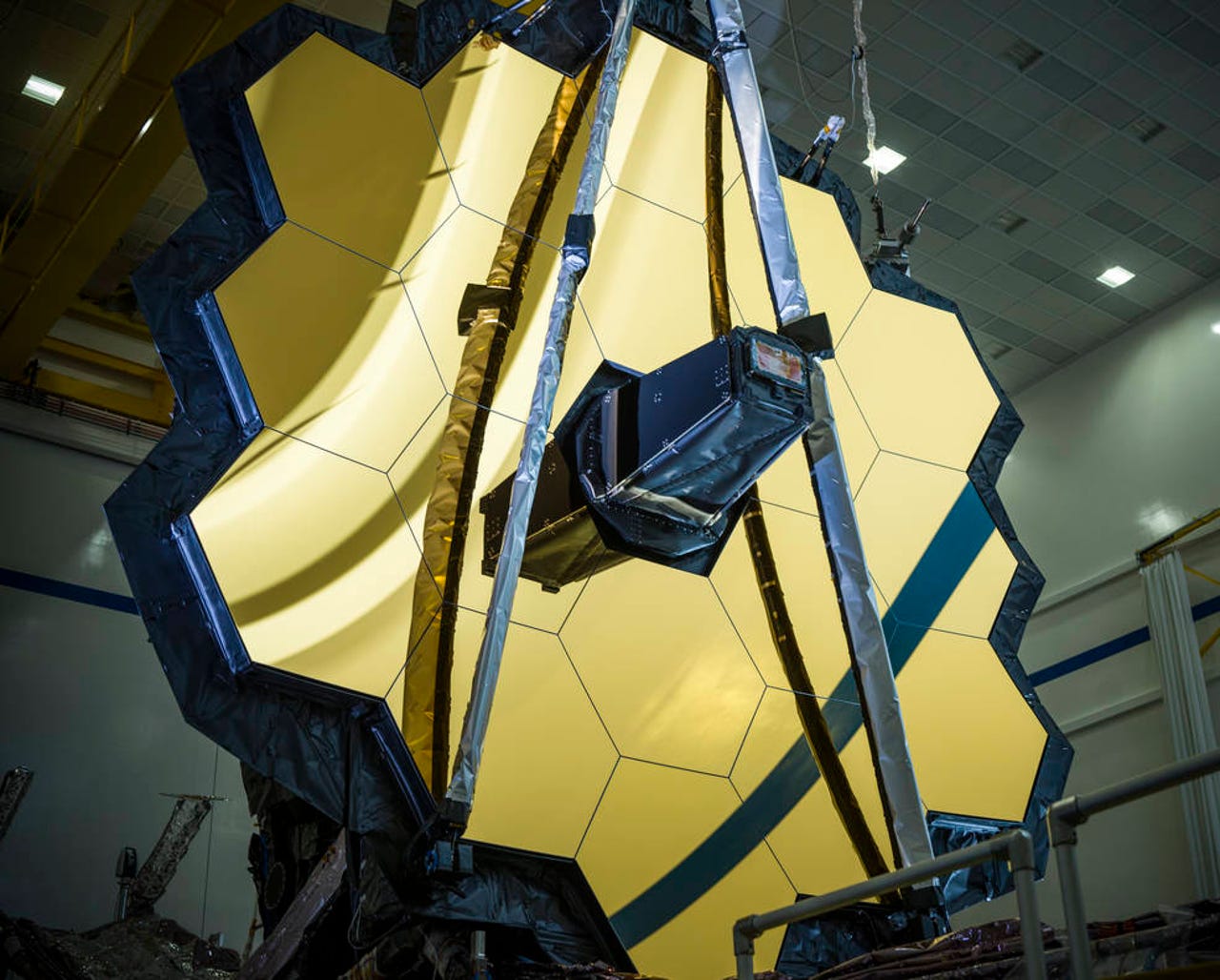The Webb Space Telescope just revealed its first image of a distant exoplanet


The James Webb Space Telescope, the premier space science observatory of the next decade.
The super powerful $10 billion James Webb Space Telescope has taken its first image of an exoplanet outside our solar system.
According to NASA, the exoplanet "HIP 65426 b" is a gas giant that has no rocky surface and is the first planet Webb has taken an image of outside our solar system.
Innovation
HIP 65426 b is about 100 times farther from its host star than Earth is from the Sun. That makes it distant enough from its host star for Webb to separate the exoplanet from the star in the image, but it was still a technical feat to do so.
SEE: What is Artemis? Everything you need to know about NASA's new moon mission
The image shows how Webb can use infrared light to capture details about exoplanets that can't be captured by telescopes from Earth.
HIP 65426 b is about 15 to 20 million years old, making it a relative youngster compared to Earth's 4.5 billion years. It was discovered in 2017 via short infrared wavelengths of light at the European Southern Observatory's Very Large Telescope in Chile, but it couldn't reveal the details Webb could because of the infrared glow of Earth's atmosphere. Webb, on the other hand, can use longer infrared wavelengths to reveal more details, such as that it is about six to 12 times the mass of Jupiter.
To block out light from its host star, Webb's Near-Infrared Camera (NIRCam) and Mid-Infrared Instrument (MIRI) employs "coronagraphs" or light masks, allowing it to capture images of the planet otherwise obscured by the brighter host star.
Sasha Hinkley, associate professor of physics and astronomy at the University of Exeter in the United Kingdom, led the observations of the exoplanet. She described it as a "transformative moment" for astronomy.
"It was really impressive how well the Webb coronagraphs worked to suppress the light of the host star," Hinkley said.
Astronomers are keen to measure the size and mass of exoplanets to understand what they're composed of. They could be rocky like Earth and Venus – NASA astronomers believe Venus could have been habitable at one point – or gassy, like Jupiter and Saturn.
SEE: SpaceX's Starlink internet is now heading to cruise ships in 'game-changing' deal
The first exoplanets were seen in the 1990s. Scientists hope the current count of thousands of discovered exoplanets will rise to tens of thousands in the near future, thanks to space telescopes such as Hubble and Webb. Exoplanets are usually discovered by observing changes in light as a planet passes in front of it.
Per The Guardian, HIP 65426 is located 385 light-years from Earth in the Centaurus constellation and the planet's atmospheric temperature at roughly 1,300C (2,370F). The atmosphere likely contains red clouds of silicate dust.
"It would be a terrible place to live," said Hinkley. "You'd be roasted alive if you could float around in the atmosphere."
James Webb Space Telescope is led by NASA with its partners, the European Space Agency and the Canadian Space Agency. NASA released its first images in July, revealing spectacular images farther than humanity has seen before.
"Obtaining this image felt like digging for space treasure," said Aarynn Carter, a postdoctoral researcher at the University of California, Santa Cruz, who led the analysis of the images.
HIP 65426 is located 385 light-years from Earth.